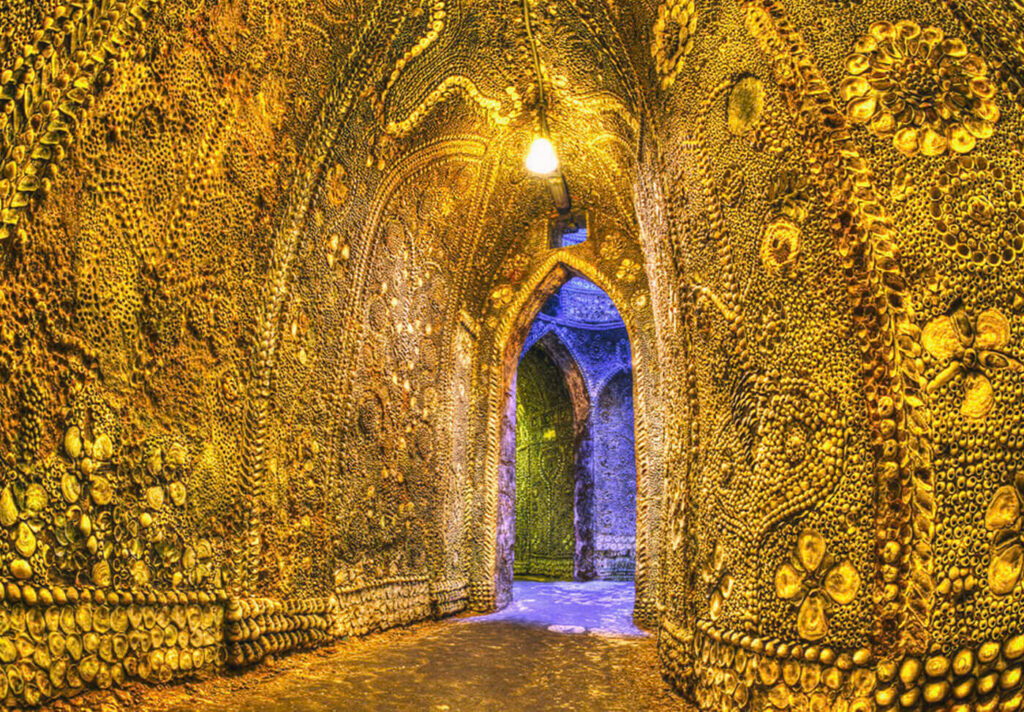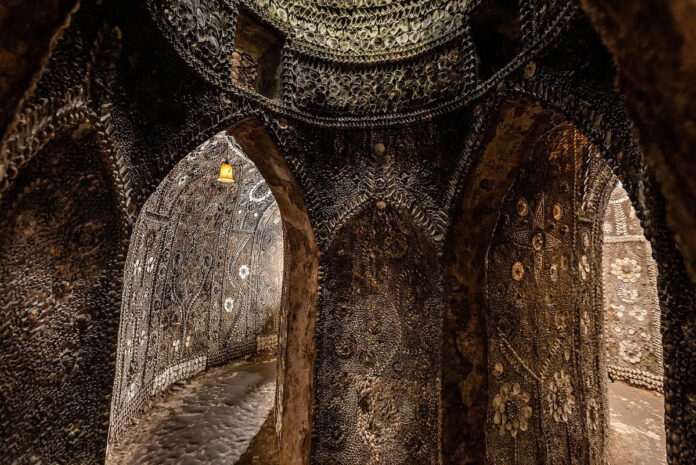Introduction

Tucked away in the coastal town of Margate, Kent, the Shell Grotto is one of history’s most captivating enigmas. Discovered in 1835 by local resident James Newlove, this hidden passageway has fascinated visitors and historians alike with its intricate shell mosaics and the mystery of its origins.
A Masterpiece of Shell Artistry

The Shell Grotto boasts over 4.6 million shells, meticulously arranged to create stunning mosaics that adorn its walls and ceilings. These designs showcase a variety of patterns, symbols, and figures, highlighting remarkable precision and artistry. The vibrant shells weave a tapestry that captivates the eye, inviting wonder about the creators’ intentions and craftsmanship.
Unique Mosaics

Within the grotto, the motifs include geometric shapes and potentially significant symbols. Some researchers propose that these designs may reference ancient religious practices, although their exact meanings remain largely speculative. The meticulous attention to detail underscores the skill involved in its creation, making it a remarkable testament to human creativity.
A Historical Puzzle

One of the most intriguing elements of the Shell Grotto is the mystery surrounding its origins. Scholars and archaeologists have put forth several theories regarding its construction and purpose:
Theories of Origin
- Ancient Connections: Some believe the grotto may date back to ancient times, potentially linked to the Roman or Phoenician periods. If true, it might have served as a ritual site for ancient communities, connecting the grotto to long-lost cultural practices.
- Medieval or Early Modern Construction: Others suggest it was built during the medieval period or even in the 18th or 19th centuries. This theory posits that it could have been the work of an eccentric individual or a secret society, driven by artistic ambition or mysticism.
Numerous theories also emerge regarding the grotto’s intended purpose:
- Religious Significance: Some speculate it may have served as a hidden temple dedicated to unknown deities or spiritual practices.
- Social Gatherings: Others propose that the grotto functioned as a secret meeting place for clandestine groups, adding to its intrigue.
- Artistic Expression: Alternatively, it could represent a whimsical art project by a local craftsman, showcasing the creative impulses of its time.
Cultural Significance and Legacy

The Shell Grotto transcends mere beauty; it embodies the human desire to create and communicate through art. Its design and construction provoke profound questions about the cultural practices, beliefs, and societal structures of its creators, regardless of the era in which it was built.
A Testament to Human Creativity
The intricacy of the shell mosaics serves as a reminder of the ingenuity that has characterized human history. Each shell tells a story, contributing to a larger narrative that connects generations and cultures.
Conclusion: A Timeless Mystery

Today, the Shell Grotto continues to enchant tourists and scholars alike, drawing visitors from around the globe eager to admire its beauty and ponder its mysteries. As experts persist in their studies of this remarkable site, the grotto remains an enduring testament to the rich tapestry of history and creativity that defines human culture.

